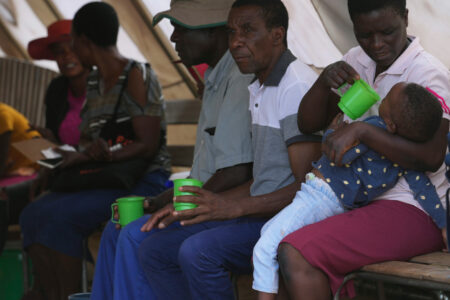
It would be hard to overstate COVID-19’s impact on Canadian society. The diverse state responses to the pandemic included decisions that previously would have been unthinkable: vaccine mandates, nightly curfews, international border closures, and the shuttering of schools and businesses.
In addition to its enormous effects on individuals, the pandemic challenged Canada’s federal structure. The challenge was hardly unique to Canada: federal states around the world were forced to navigate tricky constitutional problems. In Canada, the national and provincial orders of government stand (mostly) as constitutional equals, but their areas of responsibility at times overlap. Health care is one such area. During COVID, the provinces have disagreed with each other as well as with the federal government about how best to address its threat.
This has been in part because of genuine disputes over values (for example, over how to balance public health against other determinants of well-being, such as economic and social activity). The divergent approaches also arose because different jurisdictions faced different challenges (presence of travel hubs, older populations, or reliance upon international trade, to name but a few), and because of widespread uncertainty over the nature of the threat and the steps that might be required to contain it. Thus, there were numerous political disputes over how to manage the international border, and whether and in what contexts to mandate vaccination.
How the Trudeau government can get control of the pandemic
Of the many policy decisions taken over the last two years, one appears to have flown under the radar: the blocking of travel between provinces. Several provinces instituted measures ranging from border checkpoints to mandatory isolation periods and complete refusal of entry. (Some Indigenous nations took similar steps.) These barriers, while largely confined to the pandemic’s early months, imposed significant hardship on tens of thousands of Canadians. They raised obvious concerns under the Canadian Charter of Rights and Freedoms. Sections 6 and 7 of the Charter guarantee everyone “mobility” and “liberty.” However, because Section 1 of the Charter allows rights to be subject to “reasonable limits,” the judicial response to such measures has not always been clear or predictable.
From a constitutional perspective, another interesting question is how inter-provincial blockades affect the division of powers. Interprovincial crossings would appear to be covered by the federal Parliament’s authority over transportation, interprovincial trade and commerce, and its power to regulate issues falling within the “national interest.” At the very least, the imposition of blockades on federal roads presented an obvious (if incidental) intrusion into federal jurisdiction. But it was equally clear that setting up blockades at provincial borders reflected the provinces’ desire and authority to regulate health and matters of “local concern.” That sort of intermingling made mobility a difficult issue – a situation that was only intensified when the various governments were not united about what to do.
With those issues in mind, it is intriguing that the federal government largely remained silent about interprovincial travel restrictions. It declined to intervene in the few court challenges to those measures. The silence was mirrored in Parliament, which made no formal response, either. The reticence may have reflected actual agreement with some of the more severe measures – the government of Canada, after all, imposed a vaccine mandate that barred the unvaccinated from boarding planes, buses and trains. But it may also have reflected something more tactical: a desire to avoid a tricky political issue at a time when the government sought to unify the country as far as possible.
That federal reticence did not go unnoticed. It seems to have been a factor in in at least one judicial ruling: Taylor v Newfoundland and Labrador. The case arose when, under the Public Health Protection and Promotion Act, Newfoundland and Labrador’s chief medical officer of health denied Kimberley Taylor permission to enter the province – which she had sought to attend her mother’s funeral. (The restriction lasted for eight days, after which Taylor was allowed entry. It is not clear whether she was present for the funeral.)
Taylor sued for a declaration that the border control measures violated both her Charter rights and the constitutional division of powers. She failed. With respect to whether the regime was outside provincial competence (or “ultra vires”) the trial judge stated that, by choosing not to regulate domestic travel, Parliament had not “attempted to enter the field.” That meant that it was left to the provinces and territories “to devise their own solutions, in response to local condition[s].” As a result, he concluded, it was not for the court to weigh the balance of federal and provincial powers, then decide which level of government properly could exercise control over these interprovincial crossings.
The judge basically stated that the absence of a federal law or policy in a particular area relieves the courts of engaging comprehensively with the issue. That reasoning is unconvincing. In a different division-of-powers case involving nuclear energy workers, the Supreme Court of Canada has ruled that the mere absence of federal legislation cannot decide such an important jurisdictional question. All the same, if one level of government declines even to participate in litigation, as the federal government did in the Newfoundland and Labrador case, that is bound to affect the quality of the arguments before the court.
In a public health emergency, decisions require insight into local conditions – something that provincial and municipal authorities possess. At the same time, treating COVID (or similar challenges) as a purely local issue can impede the co-operation and collaboration necessary to achieve the best outcome for everyone. Framing public policy challenges in strictly local terms encourages an “I’m alright” attitude that is short-sighted and counter-productive. In the last year, we saw the effects of that during the worldwide scramble for vaccines, where nations prioritized their needs over a more equitable global response. Arguably, the result has been a prolonged pandemic with multiple variants cropping up all over the world.
Situations such as COVID are both intensely political and demand urgent responses, so there is no easy fix for this. The best strategy would involve pre-existing working groups or advisory committees, featuring members from federal, provincial and territorial governments. Such groups would need to be adequately resourced, nimble and able to clearly communicate recommendations.
The 1867 Constitution reflected a desire to create a single country – Canada – bound by common bonds of citizenship. Interprovincial mobility was and is an essential part of the deal. The Taylor case is an object lesson in what can happen when political actors inadvertently make decisions with serious constitutional or legal implications. One can only hope that in future cases there is greater engagement with these critical issues.












